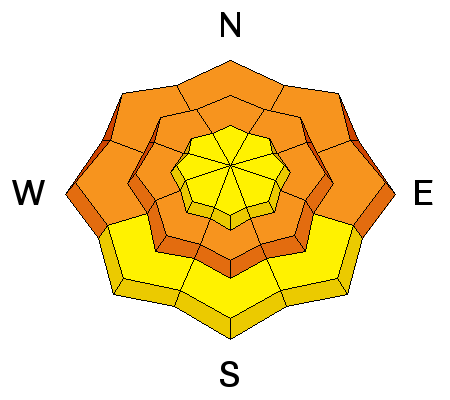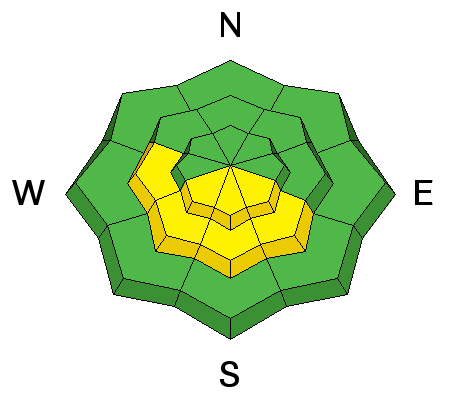25th Annual Black Diamond Fall Fundraising Party
Thursday, September 13; 6:00-10:00 PM; Black Diamond Parking Lot

25th Annual Black Diamond Fall Fundraising Party
Thursday, September 13; 6:00-10:00 PM; Black Diamond Parking Lot
| Advisory: Logan Area Mountains | Issued by Toby Weed for Friday - January 27, 2017 - 7:04am |
|---|
 |
special announcement Do you buy groceries at Smiths? When you register your Smith’s rewards card with their Community Rewards program, they will donate to the Utah Avalanche Center whenever you make a purchase. It's easy, only takes a minute, and doesn't cost you anything. Details here. |
 |
current conditions Fine deep powder riding conditions exist across the Logan Zone, but rapid accumulation of 2 to 3 feet of snow on weak surface snow Monday and Monday night created dangerous avalanche conditions. With help from time and settlement the snow becoming more stable on most slopes, but areas with unstable snow exist, and two unintentionally triggered avalanches were reported yesterday. The 8400' Tony Grove Snotel reports an inch of new snow, and at 3:00 yesterday afternoon there was 110" of total snow at the site containing 161% of average SWE (Snow Water Equivalent.) I'm reading negative 11 F at 6:00 AM at the UDOT Hwy 89 Summit weather station, with calm winds. It's 2 F at the CSI Logan Peak weather station at 9700', and the wind sensor is encased by rime-ice and not working. The wind is blowing from the northwest at 17 mph on Ogden Peak.
Eric and Amy Flygare found deep powder near Tony Grove Lake on Wednesday. |
 |
recent activity
|
| type | aspect/elevation | characteristics |
|---|


|


|

LIKELIHOOD
 LIKELY
UNLIKELY
SIZE
 LARGE
SMALL
TREND
 INCREASING DANGER
SAME
DECREASING DANGER
|
description
|
| type | aspect/elevation | characteristics |
|---|


|


|

LIKELIHOOD
 LIKELY
UNLIKELY
SIZE
 LARGE
SMALL
TREND
 INCREASING DANGER
SAME
DECREASING DANGER
|
|
description
Heightened wind slab avalanche conditions exist in drifted terrain.
|
| type | aspect/elevation | characteristics |
|---|


|


|

LIKELIHOOD
 LIKELY
UNLIKELY
SIZE
 LARGE
SMALL
TREND
 INCREASING DANGER
SAME
DECREASING DANGER
|
|
description
Despite cold air temperatures, solar warming could cause a danger of loose wet avalanches on sunny slopes in sheltered terrain. |
 |
weather Strong high pressure aloft along the west coast will expand east across the Great Basin this weekend. Expect sunny conditions in the mountains and the development of haze in the valleys. It'll be sunny today, with a 8500' high temperature of 19 F and a 10 mph northwest wind. It will be mostly cloudy tonight with a low temperature or 14 F and 10 mph northwest wind. Tomorrow will be sunny with a high temperature of 25 F and a 10 mph northwest wind. |
| general announcements Ajax from Caldera Creative on Vimeo. Any time is a great time to practice companion rescue techniques with your partners. Companion Rescue Practice Video If you sign up for AmazonSmile and designate the Utah Avalanche Center as your favorite charity, they will donate a portion of everything you spend to the UAC. It doesn't cost you a penny and we'd really appreciate the help. Discount lift tickets for Beaver Mountain, Snowbasin, Powder Mountain, and the Central Wasatch resorts are donated by the resorts to benefit the Utah Avalanche Center. Details and order information here. Your information can save lives. If you see anything we should know please help us out by submitting snow and avalanche observations. You can call us at 801-524-5304, email by clicking HERE, or include @utavy in your Instagram. In the Logan Area you can reach me at 435-757-7578 We will update this advisory regularly on Monday, Wednesday, Friday, and Saturday mornings by about 7:30. This advisory is from the U.S.D.A. Forest Service, which is solely responsible for its content. This advisory describes general avalanche conditions and local variations always exist. |